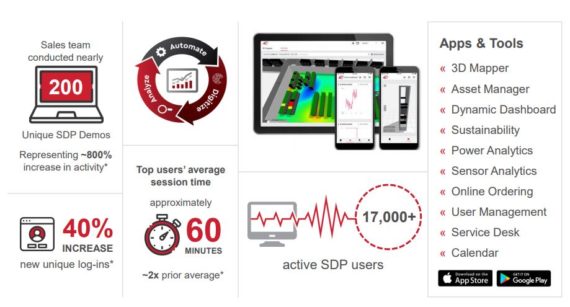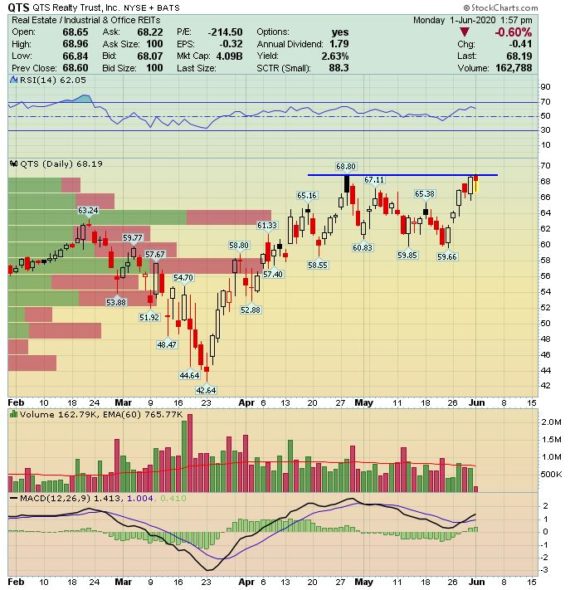QTS Realty (QTS) – Getting Down with SDP
Clients of Jaguar know that we are bullish on Digital REITs, making Digital Realty Trust (DLR) a Top Pick as well as issuing a trade in another name just last Friday. QTS Realty is in the same boat, offering data center solutions throughout North America and Europe. In early-May, Jefferies analyst Jonathan Petersen would upgrade QTS to Buy from Hold given his view that the “Work-From-Home” digital transformation “has staying power” and that enterprise applications that have been put in the cloud to enable more efficient work-from-home are likely never coming out.
The main reason why I am bringing QTS up today is because a note from Raymond James is catching my attention and it surrounds the company’s Service Delivery Platform, or SDP, which empowers customers to remotely interact with their data and services with digitized orchestration capability.

Looking back to its earnings call in late-April, management noted that SDP has been a key contributor of QTS’s market share growth over the last several years, and its differentiation of value to customers has only accelerated in the current expanding remote workplace. “Today, we have over 17,000 users on SDP across the base of 1200 plus customers. Since the beginning of March, the number of new and unique logins to SDP has increased approximately 40%. SDP also proved to be powerful tool for our sales force given more limited ability to currently to provide physical in person tours of our data center facilities. Since the beginning of March, our sales team has conducted almost 200 unique SDP demos, which represents a nearly 800% increase in activity.”
Fast forward to this morning where Raymond James analyst Frank Louthan commented that QTS has thrown down the gauntlet with claims that its Service Delivery Platform is superior to the competition and offers unparalleled views into activity and workloads in its customers’ space. Raymond James would request demos from all the public data center providers and three agreed to grant us access (QTS, EQIX, and DLR).
In the note, Raymond James said that while all three platforms have the ability to track and report common data, the ease of use of the systems was quite different. Only QTS had the entire system wrapped up into an app that was available across multiple desktop, tablet, and mobile platforms, complete with 3D imaging and simple graphics that outlined the situation visually down to an individual rack within a cabinet. QTS’s system also has video capability using facial recognition to detect and identify employees and contractors separately, highlight an open cabinet door and other potential hazards inside the customers cage, and it is all either real time or on a recorded basis to highlight potential errors and problems. Live heat maps allow customers to see the areas with potential and existing performance issues and to see outages in real time and track down problems.
As far as features and functionality, QTS SDP system was the clear winner. This isn’t to say the others didn’t have some of this capability down to the rack level, but their systems were in a tabular format on the screen, not necessarily available across cellular and mobile platforms (if at all), and do not have all the features automated or available in all facilities. Both EQIX and DLR could show rack cabinet level data with heat and power consumption, but they were not in the easy-to-use mapping, but rather followed older interfaces with drop downs into the data.
Is This A Big Deal?
Until March, the answer to this was likely “No” because the customers preferred to make the trek to the facility – just like they always had. Suddenly in a COVID-19 world, remote usage of all these systems skyrocketed and customers were forced to use them on a daily basis in ways they may not have tried before. The question of how much this drives incremental demand may just now be able to get answered as customers were effectively forced to change old habits and rely on these systems more than they did in the past.

